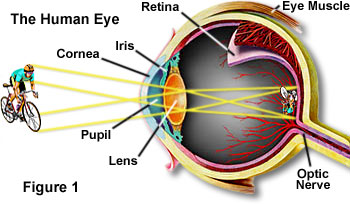We have an eye that actually sees images upside down, and a brain that can then flip the image upright again.
How did we evolve this? I doubt that more primitive animals saw everything upside down then at some point developed a brain that could invert the image again.
How did we evolve this? I doubt that more primitive animals saw everything upside down then at some point developed a brain that could invert the image again.



